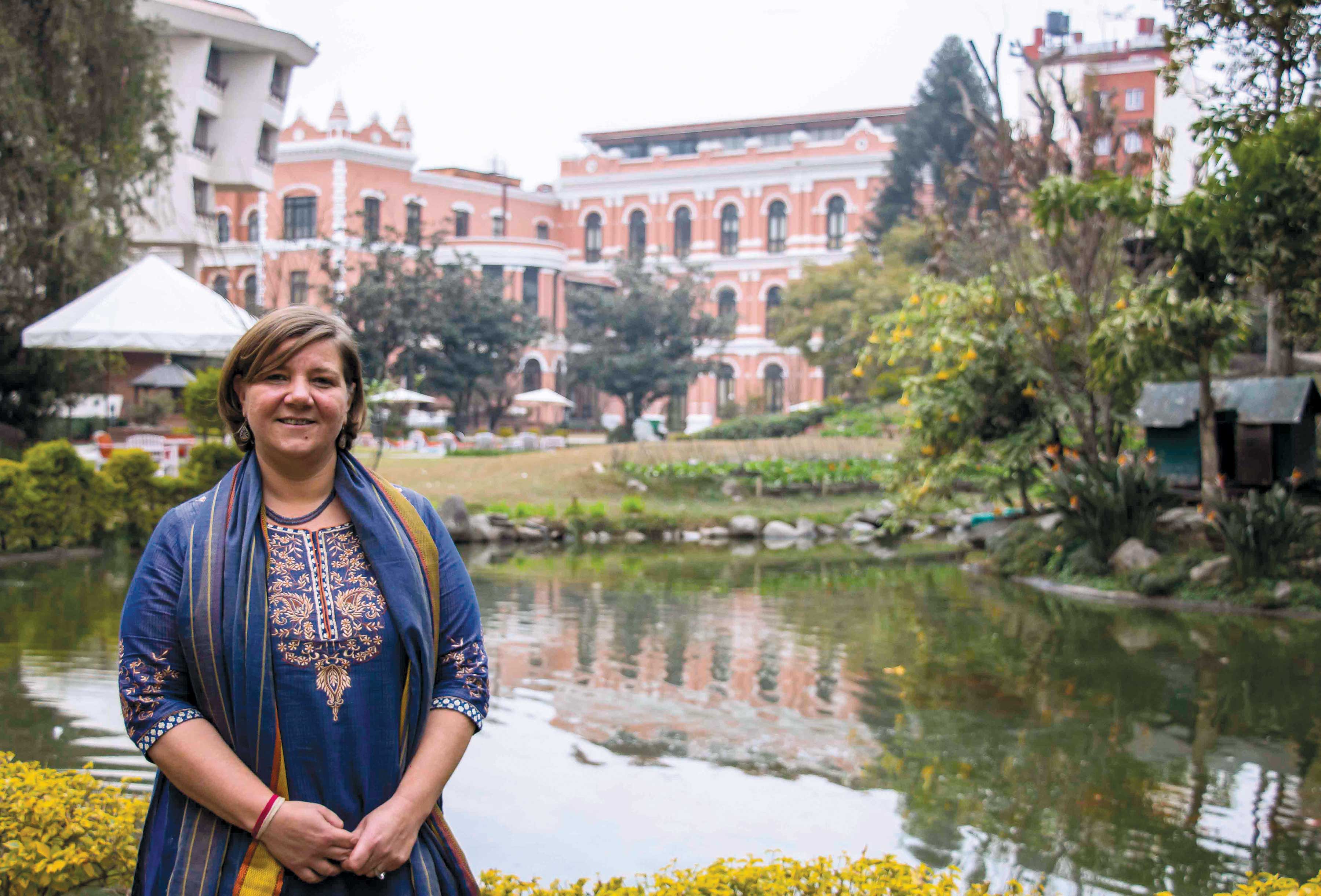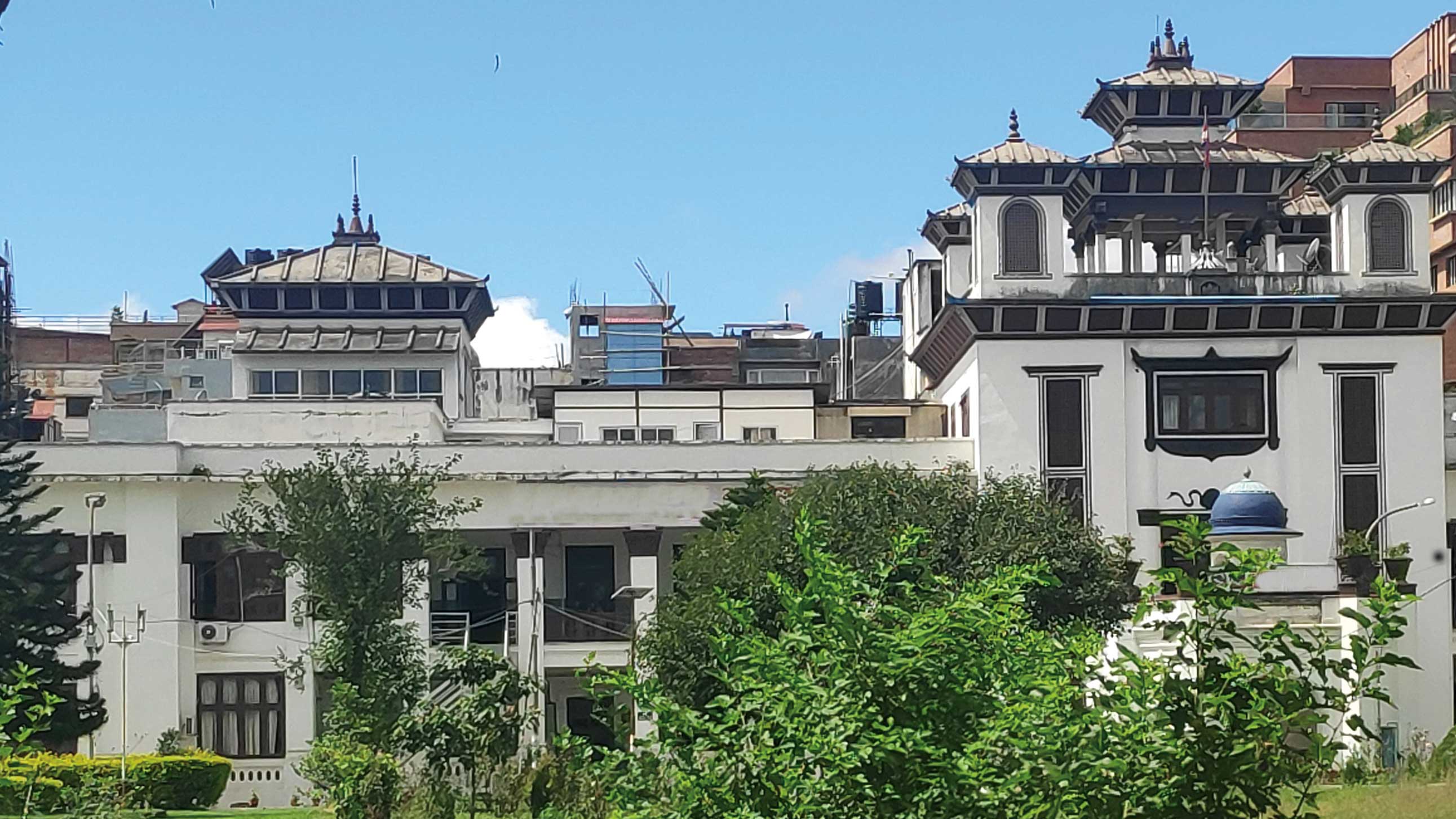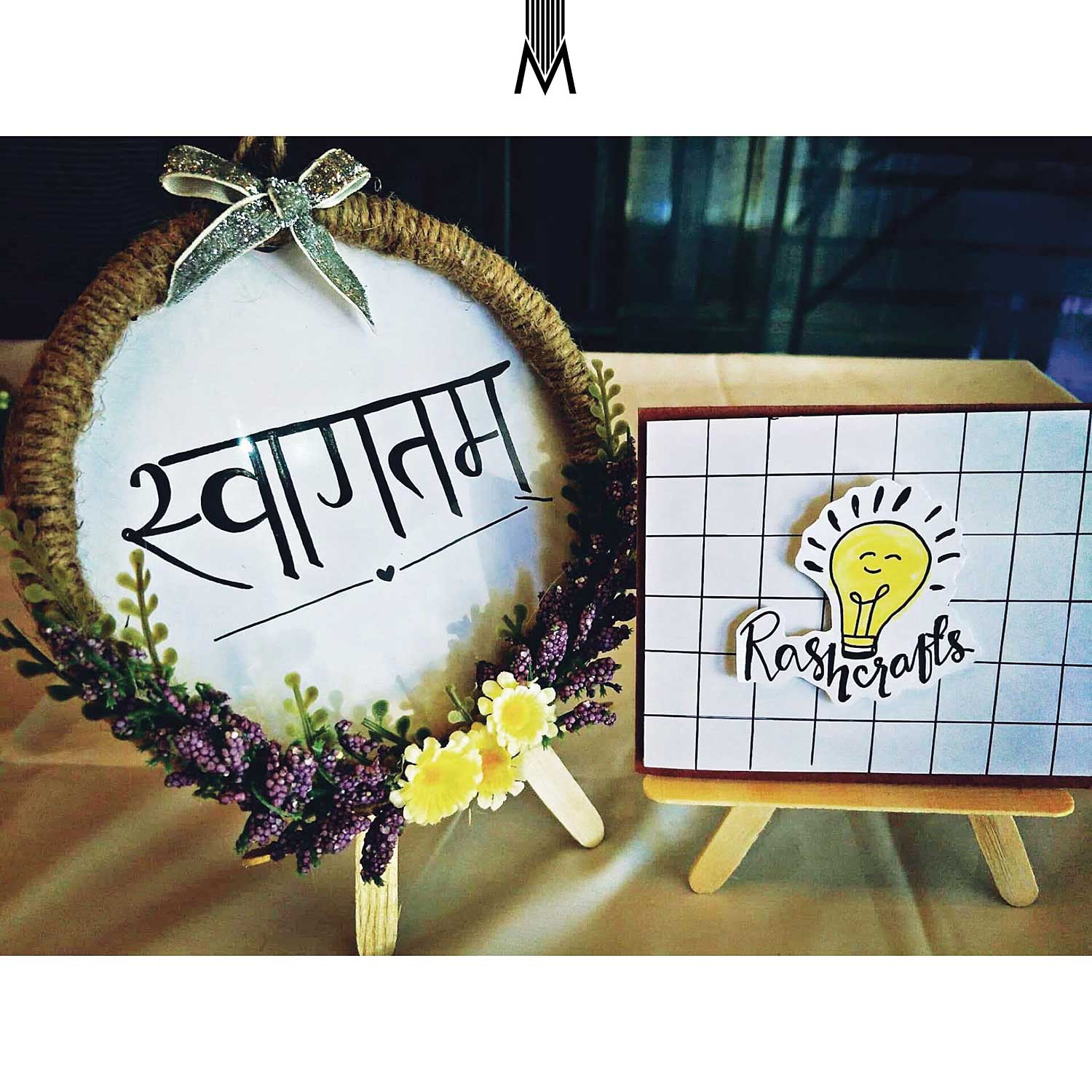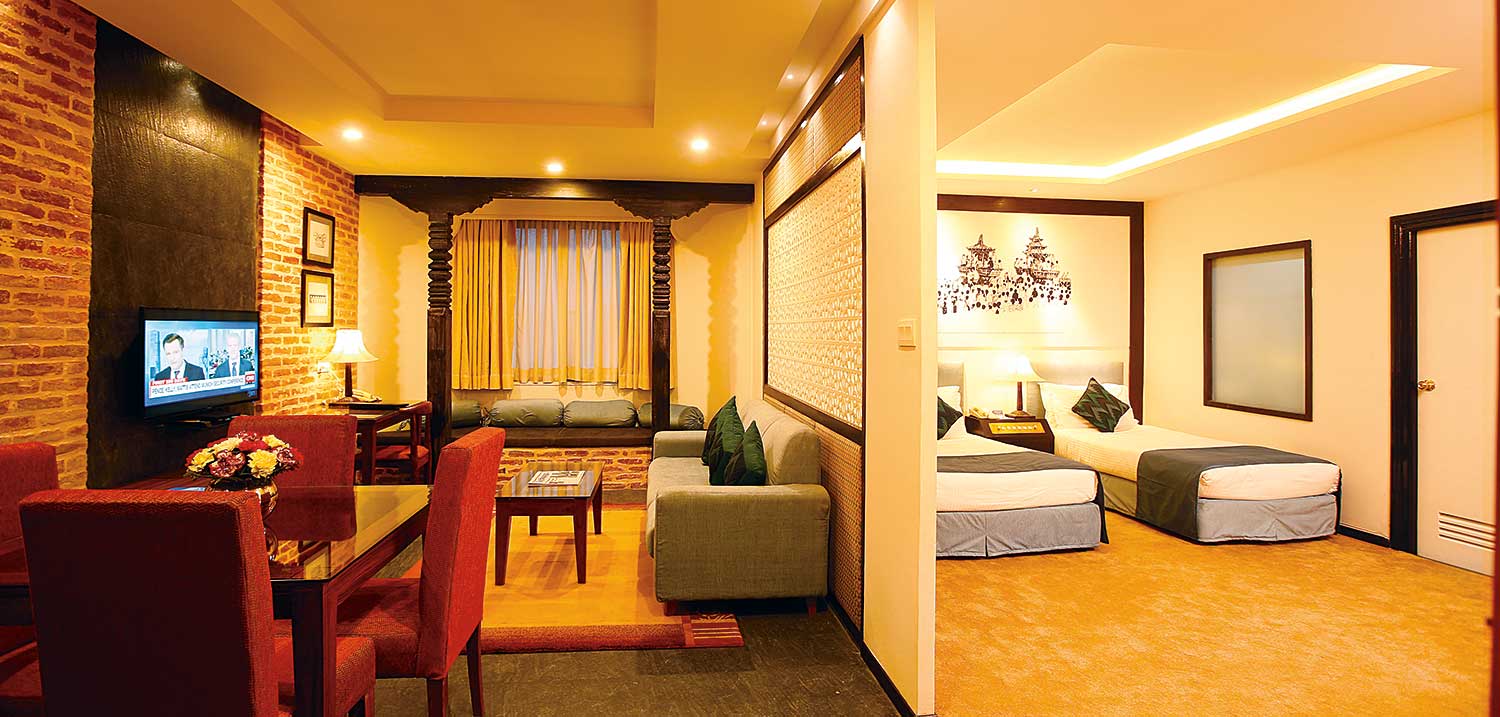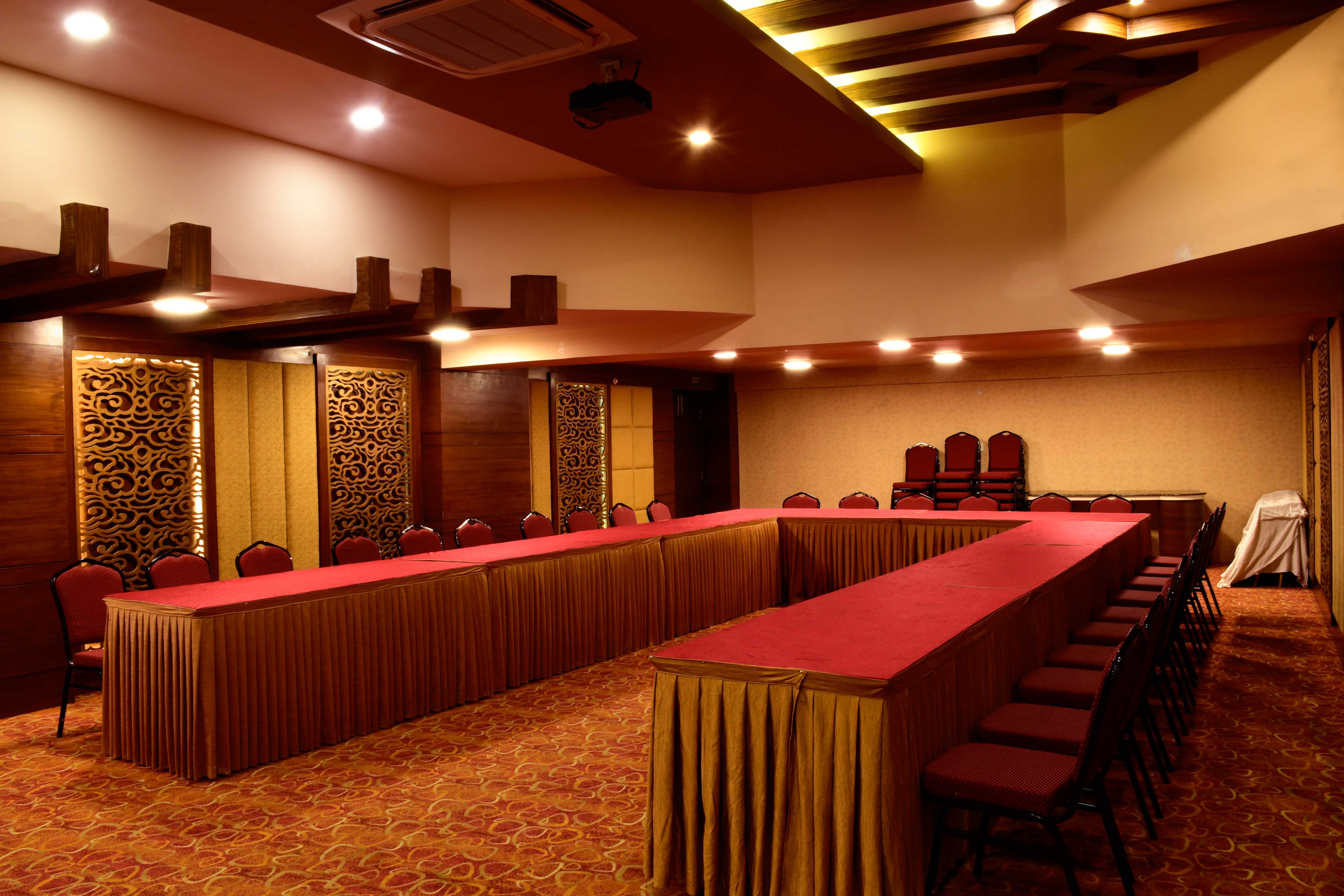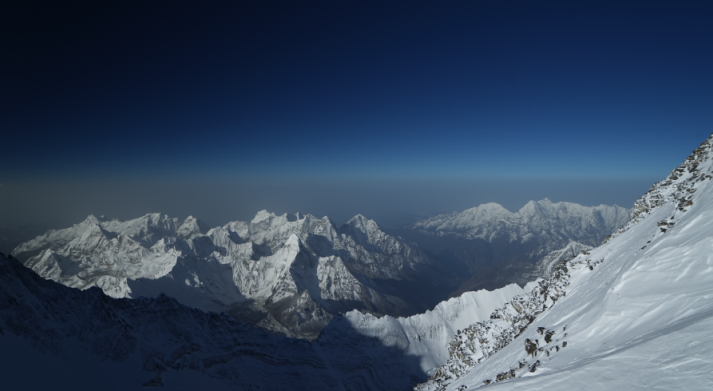For my friends and me, trekking to Gosainkunda was more about fulfilling a personal wish, conceived in a café, than a pilgrimage. It was also our first trek together, after almost four years of planning.
We took the longer, more arduous route, starting from Sundarijal. After 16 kilometers from Sundarijal, in Chisopani, we decided to have lunch. Sanjeev, Rajun and I were in favor of stopping for lunch. Alon, who was carrying most of our packaged food, proposed we continue. He had already prepared and served each of us spoonfuls of his “delicious” concoction of pulverized oats and biscuits on our way up. He said we could eat that again instead of wasting time in a hotel. We opted for a local hotel.
Inside the hotel two gentlemen were drinking chhyang, an alcoholic drink made from fermented corn. One of them asked where we were heading. We told him. He had a story that took place in Gosainkunda, a very long time ago. We turned towards him as he took another gulp of his drink. According to the story, a shaman once went with his wife to challenge the serpent that lived in one of the lakes close to Gosainkunda. Instructing his wife to beat the jhegru, a drum, he went into the lake. After an underwater duel he hauled the serpent out of the water. Seeing the macabre creature slung over her husband’s shoulders, the woman stopped beating the drum and fled. Without the accompaniment of the drum, the shaman lost his powers, and the serpent devoured him. “That’s why you cannot trust a woman,” concluded the folklorist, driving home the moral of the story. “Men always blame women,” countered the landlady as she moved around to fetch ingredients for our meal. The storyteller wasn’t getting anymore drinks for the day, I thought. Then he leaned forward and lowered his voice from a confident storyteller’s to that of a nervous conspirator’s. “When your near the Nagkunda (serpent lake),” he began, “do not utter the name of the shaman. If you do, the serpent will attack you.” The name was Goley.
Out of nowhere came one of the many fables of the Mughal Emperor, Akbar, and his witty minister, Birbal. The story was told once. Then, the landlady did an encore, complete with intonations. It seemed she was more interested in having our ears than our money. Wrong. For, when we paid for the meal, one fried egg cost us 15 rupees! This was just 16 kilometers from Kathmandu. And, this was just the beginning. It taught us never to order without checking the price first though.
Downhill from Chisopani, I slipped and fell twice, on a slimy trail. The others believed it was made slippery by the corn chhyang.
At the base of a hill, we asked children in school uniform for directions. They confirmed we were on the right trail. The pangs of a climb hit my calves as I urged Rajun and Sanjeev to quicken their pace. Rajun, who everyone else thought would have the hardest time on the trek, surprised everyone with his stamina. He led the group from time to time, a lead he obtained, maintained, shared and then surrendered, and got back. Sanjeev found a new companion in a boy, returning from school. It began raining as we neared Chipling.
After a brief rest and a warm, spicy bowl of noodles, we were off again. A little ahead from where we had rested, the boy whom Sanjeev had walked up with was waiting beside the trail. He had in his hands a plate full of ripe plums. He offered the plate to us. We thanked him and filled our pockets with them. We bade goodbye and told him to do his best in school. Hearing that, his mother said proudly that he often told her he wanted to study up to a class that did not have a number. In that area, schools offered education only up to secondary level.
In Gulfubhanjang, our night halt, we stopped outside a monastery-like hotel. Inside, walls embellished with Buddhist paintings gave the hotel an opulent look. We waited anxiously in the courtyard for the owner, who we feared would ask for an amount we couldn’t afford. He gave us a room to rest our tired bodies at a price that didn’t hurt our purse.
Getting to Gulfubhanjang from Sundarijal before nightfall was, in our opinion, a notable achievement. I knew better. Someone mentioned it to the owner of the hotel in the hope of a pat on the back. “You call this walking!” was the Sherpa man’s response, followed by laughter. On weekends, his sons got home for lunch setting out from Sundarijal in the morning. We had started around the same time, but arrived an entire half day later, for dinner. That was walking.
Risking another blow to our trekkers’ ego, we asked him how far Gosainkunda was. He said it would take us two more days. Then, he showed us where two days of walking would take us. Pointing to two snowy peaks, too far off to appear any bigger than they would on maps, he said, “You’ll have to pass between them into Gosainkunda.”
A British couple, who were also staying in the hotel, told us an amazing fact about Mt. Everest. They said they had seen a “black Everest”. The British lady explained: “In winter the wind around Everest is too strong for snow to accumulate. Hence, the black mountain.”
The next day was a taxing one. For every little gain in altitude, we lost big amounts of body fluid. The corpulent clouds overhead brought to mind the rain cycle diagram I had learnt in school. It felt as if the clouds were fattening at the expense of our body fluids. The trail ran through a forest of trees with bark-less trunks. Even with their close growth they looked naked, somewhat ravaged. Every time we reached a hill top – which was the beginning of a new, steeper climb – we turned around to gauge the progress we had made only to find that a mist had crept up behind us, silently swallowing the vista below.
In Mangin Goth, at an altitude of 3,285 m, we got lunch and also the first real rain of the trek. As the rain smote the corrugated iron roof, we carefully examined ourselves for leeches. “It’s very cold up there,” a Dutch doctor, sipping on a 100-rupee Coke told us. “But they have blankets,” he assured us. There was nothing warmer than hearing a six-foot man say that, especially when you couldn’t sleep the night before because the quilt was too small.
The next building we saw was in Thatepati where I counted four wooden lodges, all locked. On a distant slope, a tin roof shimmered in the retreating light. A little down the trail we asked the owner of the only lodge that was open for directions to Ghoptey. He told us to follow a downhill trail, the first for almost 10 hours. A dip and rise later, we were in Ghoptey.
The hills end and the mountains begin in Ghoptey. Lively forests end abruptly, lifeless boulders appear everywhere. There are verdant forests below and barren slopes above. The contrast is the altimeter.
There was no contrast in the meals of the past day and the dinner. We ate rice, lentils and fried potatoes, something we had had for every major meal thus far. Ghoptey’s jagged hills added to the stillness of the night. The only thing that was constantly on the move was the mist, which diluted the milky moonlight. The beholders were more fleeting than the scenery for once; it was too cold to stand outside.
From Ghoptey, the trail is like one of those inclined conveyer belts on a stone crushing machine, full of loose stones, except that it is still. The trail was like a frozen landslide, the rocks seemed to have been still tumbling when something stopped them. Contrary to appearance, the rocks were firmly in place. Occasionally, the white of a waterfall would break the monopoly and the monotony of the mountain’s grey over the landscape.
Two hours from Ghoptey we were in Phedi, the last settlement – if a single house counts as a settlement – before Gosainkunda. Snow-tipped peaks, cold refuges towards which patches of sun-threatened snow seemed straining to reach, glistened in the sun. The waterfall grumbled relentlessly as it fell and flowed down into lush ravines, where small meadows and houses were discernible. On a slim pole the Nepali flag swayed lazily in the wind. Stars and crosses bordered the blue flag. My mind went back to the recent bombing of a church in Kathmandu. A solemn and weather-eroded ‘monument’ stands here in memory of the victims of the Thai Airways plane crash of 1992.
We were at a height where I couldn’t tell clouds from mist.
The Langtang National Park, through which the trail passes, is renowned for its red panda population. In every village there is at least one hotel named after the exotic animal. The owner of the hotel we ate in told me he was going to change its name to the ‘Red Panda Hotel’. At the time, the hotel was named after his son. It was here that the threesome of rice, lentils and potatoes became a foursome. The ubiquitous club welcomed a cabbage pickle as its newest member. So did we.
The first kunda or lake we saw was Suryakunda (surya: sun). I left the trail and climbed up, down and through boulders to get to a higher point to see the lake. Small ripples moved out in all direction on the surface of the azure and turquoise lake. Alon came up a little later. The mist sneaked up from below before Sanjeev and Rajun could reach the top. Like an army hungry for conquest, it flowed down into the lake, turning the colorful waters pale. It did that every time you wanted to look at something in a relaxed manner. “Keep moving”, it seemed to say.
The mist disappointed us many times, but it couldn’t defeat us. It was there in Gosainkunda, too. The Gosainkunda Lake was too large for the mist; what would have been a shroud in other places was reduced to a veil. Like an Arabian maiden, the lake pushed aside its veil of mist to reveal the length and breadth of its beauty, and a few houses on the far side. Smeared red by devotees, and laden with offerings of rice grains (which local birds cherish more than the gods), butter lamps, burned sticks of incense, and plums, the shrine is conspicuous. As a word to the pious that bring offerings to the gods, I ask that they open their eyes after praying and keep them open. I don’t know if you’ll see God, but I am sure you’ll see litter, lots of it. Then, you’ll understand why you didn’t see Him. Citing our earlier ablutions in a waterfall, Alon and I merely dipped our heads in the lake. Sanjeev and Rajun did a full body dip. None of us saw an image of God in the water. It is believed you do if you have a pure conscience. “Do not dip in that cold water”, was the voice of my conscience. We did everything to get nearer to God: We performed pooja, prayed eyes shut and filled all our bottles, except one, with the sacred water from the lake, the single biggest act of faith as well as of stupidity.
Then we headed back to the lodge and did the last thing that’ll bring you closer to God – we bargained.
In the evening, we went down for a walk around the lake, accompanied by James, a New Zealander and his sister, Pautia. As we skirted the lake, James brought up Shiva, a God that fascinated him greatly. Hindus regard Lord Shiva as the ‘destroyer of the universe’. What most of us forget is that he is also the cleaner of any mess that is too dangerous for his fellow-gods. Once, the gods churned the ocean for amrit, the potion of immortality. The first element to appear from the ocean was poison. It had to be dealt with. Shiva volunteered to consume the poison. But even he couldn’t digest it, and was soon roving in search of a place to spew the poison. It is believed that Shiva spewed the poison into the Gosainkunda Lake, blackening it. To this day, the small patches of black that one can see on the lake’s surface are believed to be the residue of that poison. On one edge of the lake, people had placed stones, one top of another to make Shiva lingas, a phallus-shaped structure symbolizing Lord Shiva. That is an ode to the God who lives like a rock star and works like a lifeguard. It is also a different way of writing so and so was here, without actually writing.
One dip in the lake, they say, washes away all your sins. Understandably, some believers do not wish to carry back any trappings from their pre-dip, sinful lives. The result: One area of the lake shore is littered with undergarments. That had James and Pautia perplexed, and the rest of us embarrassed. They sought the counsel of their ad hoc guru, Sanjeev, who had no explanations for once. “We thought that was something of a custom,” admitted the siblings. “We just couldn’t decide which ones of ours we wanted to leave behind,” Pautia added, giggling.
There are dozens of lakes in the area, and each one is connected by small waterfalls with the other. Nature has setup a siphon: A lake usually spills down into another, which, in turn, flows into one lower down. Heading out of Gosainkunda towards Dhunchey, the headquarters of Rasuwa District, we saw the metamorphosis of the sterile lake water from a little stream to a river that sustains the forests of the Langtang National Park. On the other side of the downward trail, peaks that rise over the clouds beckon, and all of a sudden, 4,380 m doesn’t feel that high.
I am not sure the trek to Gosainkunda cleansed me of my sins. But it sure did clear my head of the pessimism that is rife in the capital. The people we met were not much better off than what we in the cities believe ourselves to be. They don’t whine about it all the time, that’s all. They don’t have much, but they give. It reminds you that amidst all the political turmoil and uncertainty, there still are places where there is kindness, optimism, and children who want to “study up to a class that does not have a number”. There is a hope and a spirit that is contagious.
That’s a place I would like to go on a pilgrimage.


